Colombia is known for many things: Pablo Escobar, gangs, violence and most importantly Caribbean beaches but one of the best things about the country by far is the food. Colombian food is like no other, you will walk into a fruit market and you will have no idea what over 60% of the fruit is.
Colombia is a country surrounded by the Caribbean and Pacific Ocean, situated in the amazon rainforest, it has miles and miles of farm land, mountainous terrain and a year round constant climate. All this makes Colombia the perfect place for growing crops, catching fresh fish, making bread, picking fruit and consistently maintaining a year round cycle of fresh produce.
Some of the fruit I didn’t know before I arrived in Colombia were: Granadilla, Lulo, Guanabana, Maracuya (kind of Passion Fruit), Uchuva and Mangosteen.
Granadilla is a orange sized fruit, orange in colour, but the shell is hard. You crack the shell and break the Granadilla in half to open up the contents in the middle. Inside is a collection of small seeds covered in a mucous-like substance (tastes better than it sounds). It’s very refreshing and slides down your throat easily.

Lulo is a small orange fruit, with a tangy citrus like taste and is full of Vitamin C. Again the fruit is incased in a shell, which is edible but the seeds inside are the best part.
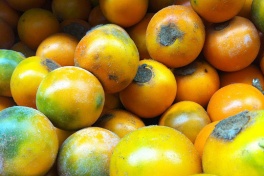
Guanabana is green and spiky on the outside but white and soft on the inside, you eat the inside white part, which is very soft and mushy and has a very tasty, sweet flavour.
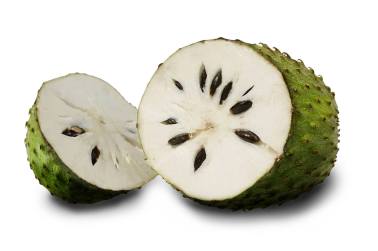
Maracuya is a type of passion fruit with practically the same flavour. The difference being that they are the size of grapefruits which gives them many more seeds than a standard passion fruit.
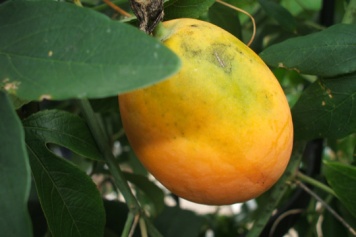
Uchuva is a small tomato like fruit (it reminds me of a tomato when it first starts to grow) except they are yellow in colour. They are very good with aiding digestion and have a tangy flavour.
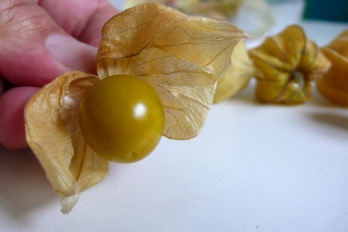
Mangosteen is a fruit originating from Asia, it is a medium sized dark purple fruit which you break in half to reveal the white flesh inside. This has a soft melon-like texture and tastes sweet.
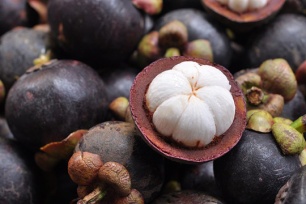
In Colombia juices are very popular and can be made from any of these fruits, the juices are mostly freshly made within restaurants or juice bars.
Colombia also has some very delicious savoury food, here are a few of my favourites:
Arepas – A corn tortilla like (but thicker) bread. They are mostly eaten for breakfast or as a snack, with cheese, jam or whatever you fancy spread on top. You can also buy them fried with an egg inside, these are called ‘arepas de huevo’.
Empanadas – A pasty or corn circle folded in half with meat inside and then fried. You can buy them with many different fillings such as cheese, chicken, pork or beef.
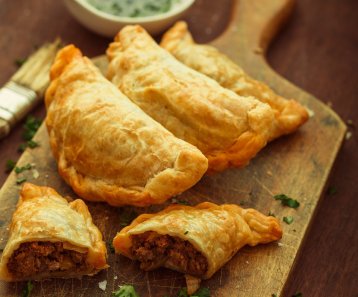
Seafood is very popular in Colombia specifically the closer you get to the ocean. This is a photo of a typical Colombian meal on the coast –
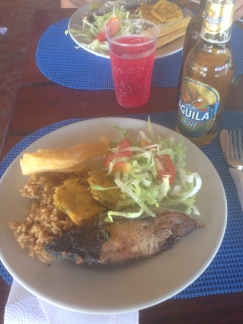 Fish, rice (usually coconut flavoured) and plantain which is similar to a banana but not as sweet. Plantains can be cut and fried (as pictured), made into chips or just baked. Yuka is a root vegetable similar to parsnip, it can also be cut and fried (as shown), baked or made into chips.
Fish, rice (usually coconut flavoured) and plantain which is similar to a banana but not as sweet. Plantains can be cut and fried (as pictured), made into chips or just baked. Yuka is a root vegetable similar to parsnip, it can also be cut and fried (as shown), baked or made into chips.
This is another traditional Colombian meal, containing; a baked plantain, an arepas with cheese, meats, sausage, guacamole, corn, potatoes, and yuka (fried).
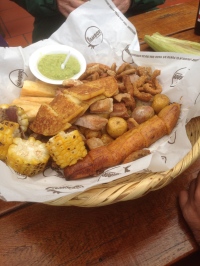
These are just some of the foods I found interesting when I visited Colombia.
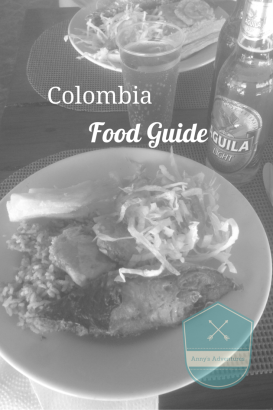



Yass!! Colombian food is seriously THE best!! ❤ -Sofia.
LikeLike
The best food ever!
LikeLiked by 1 person
I love granadilla, or as my wife calls it “boogers”.
LikeLike
granadilla is so good. It does look like them
LikeLike
Those fruits are tasteful! Peru has those fruits and thousands of dishes also.
Colombia and Peru, join with Brazil are the 3 more biodiverse countries in the world.
LikeLike